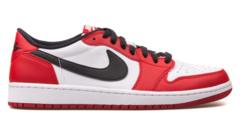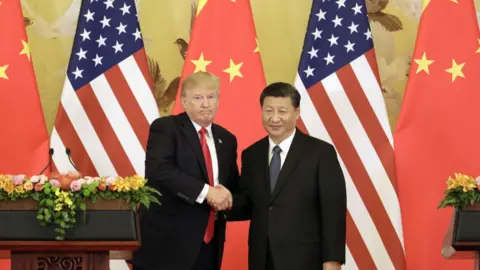The iconic Nike Air Jordan 1, synonymous with American sneaker culture, is now facing potential price hikes due to recent tariff changes aimed at imports from Asia. Although Nike predominantly sells its products domestically, the majority of its shoes are manufactured overseas, especially in countries like Vietnam, Indonesia, and China—all under scrutiny due to President Trump's tariff policies.
Following the tariff announcement, Nike's stock plummeted by 14%, reflecting investor concerns about how these tariffs would disrupt the company's supply chain and operations. The overall impact on sneaker prices remains unclear and hinges on Nike's decisions regarding cost absorption and the duration of these tariffs.
These tariffs could range as high as 54% on imported goods, with Vietnam—a key producer for Nike—expected to see prices rise by 10% to 12%, as estimated by Swiss bank UBS. Analysts suggest that Nike might have little choice but to increase prices in response to rising costs. “The competitive nature of the industry could limit how much they can pass on to consumers without harming demand,” stated Morningstar’s senior equity analyst, David Swartz, projecting a possible increase of no more than 15%.
With competitors like Adidas and H&M in similar predicaments, Nike's ability to maintain reasonable pricing while protecting profit margins becomes critical. Last fiscal year, Nike achieved $51 billion in sales, boasting a healthy gross profit margin of over 40%. However, operational costs diminish these profits significantly, with a substantial portion allocated towards selling and administrative expenses.
Industry specialists suggest alternative strategies for cost management, such as simplifying shoe technology or extending design cycles. However, Nike's dependency on the U.S. market—contributing approximately $21.5 billion to their revenue—raises concerns, particularly in light of rising consumer hesitancy driven by economic factors linked to tariffs.
The backlash from China involves retaliatory tariffs of up to 34%, complicating the landscape further. Analysts believe that unless tariffs are negotiated down, Nike will be compelled to raise retail prices, potentially impacting demand. “There’s significant concern about U.S. consumer sentiment, directly impacting the demand for Nike footwear,” posits Sheng Lu, a fashion studies professor.
While tariffs can drive companies toward domestic manufacturing, the intricate nature of footwear production makes swift transitions impractical. Analysts warn that without significant investment and time, Nike is unlikely to overhaul its supply chain soon.
As the situation unfolds, Nike remains under pressure to navigate these challenges while keeping its sneaker prices attractive to consumers. The company's management has yet to comment on the impending changes, reflecting a cautious approach as it weighs the best responses to evolving trade conditions.





















